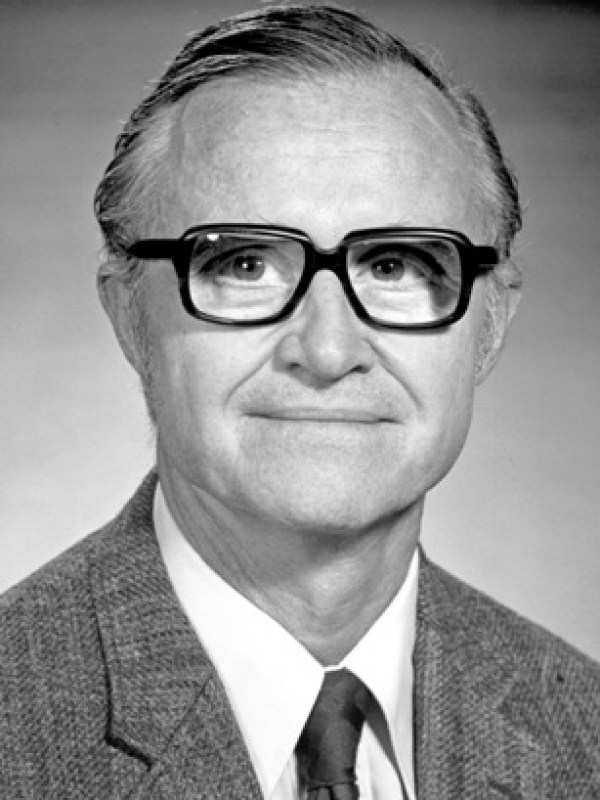George Robert Tilton
George Robert Tilton, devoted family man and Professor Emeritus of Geology at UCSB, passed away peacefully in his sleep at the home of his daughter in Eugene, Oregon on October 12, 2010. He is survived by his wife of 62 years, Elizabeth Tilton of Santa Barbara; daughters Linda (Bruce) Sisson of Eugene, OR and Helene O’Connell of Eureka, CA; sons David (Coral) Tilton of Trout Lake, WA and John Tilton of Carpinteria; grandchildren Jane (Tim) Kovash, Karen (Brett) Blundon, Brittany Tilton, and Nathan, David, John and Robin O’Connell; and four great-grandchildren. He was pre-deceased by daughter Elaine Tilton.
Born June 3, 1923 in Danville, IL, to Edgar Josiah Tilton II and Caroline Lenore (Burkmeyer) Tilton, George spent his childhood in eastern Illinois, where he vowed as a child that his life’s goal was “to go to the last piece of dirt”. He was powerfully affected and influenced by the fact that despite his family’s facing of its own financial struggles during the Great Depression, whenever beggars knocked at the door, his parents always gave them food. Although of modest means, his parents did what they could to support his education and help send him to college, an investment which was to pay great dividends.
He began college at Blackburn College, a place he remembered with great fondness and which later honored him with its Distinguished Alumni Award. World War II called George away from his studies, and he was proud to have served in the 26th Infantry Division (the “Yankee Division”) of the Army, receiving a Purple Heart after being wounded in Alsace.
Following the war George resumed his education studying chemistry at the University of Illinois. It was there that he met the love of his life, Elizabeth Jane Foster, who was a teaching assistant in one of his lab classes. They married February 7, 1948. He then attended graduate school at the University of Chicago, where he earned a PhD in Chemistry. His graduate work in Chicago with colleague Clair Patterson pioneered the uranium-lead isotopic method of determining the age of rocks, devising the basic procedures for analysis that are still in use today, and led to the calculation of the age of the earth and solar system at 4.56 billion years, a determination that has remained little changed for more than half a century.
A highly distinguished career in geochemistry ensued. He conducted research at the Carnegie Institution of Washington from 1951-65, and served as professor of geochemistry at UCSB from 1965-91, still remaining active in research long after his “retirement”. His dedication and hard work earned him a worldwide reputation as a premier researcher, highly respected teacher and man of modesty, integrity and humanity.
His many honors included election to the National Academy of Sciences in 1977, President of the national Geochemistry Society in 1980, UCSB Faculty Research Lecturer in 1981, Honorary Doctor of Sciences degree from the Federal Institute of Technology in Zurich, Switzerland in 1984, and Humboldt Foundation Awards for studies at the Max Planck Institute in Germany in 1989 and 1993. As stated in tribute in the monograph Earth Processes: Reading the Isotopic Code, “George is honored day in and day out by all who know him, for his spirit is gentle, generous, and nourishing to all.”
In addition to his passions of being with his family and pursuing his research, George enjoyed classical music and spending time in the outdoors hiking and camping, plus the fellowship of his colleagues around the world. He sang in the Trinity Episcopal Church choir and Santa Barbara Oratorio, and was a remarkably strong walker until his very last days. He was proud to have been the advisor to a wide array of graduate students from nearly every continent.
A memorial service will be held Saturday, October 23 at 10:30 am in the chapel at The Samarkand Retirement Community, 2551 Treasure Drive in Santa Barbara. In lieu of flowers, donations may be sent to Hospice or the charity of your choice.

